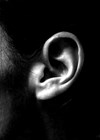Audiology features
The challenge of disrupting the hearing care market in the USA
Barry Freeman, an Audiology Consultant of extensive global experience, examines the business model of hearing care service delivery in America. He discusses the challenges the profession has faced, and proposes some food for thought on learning from other health care...
Hearing healthcare in India
With a population of more than a billion people, and an estimated prevalence of hearing loss of somewhere between 5.9% and 16.5%, depending on which definition you use, India has a significant number of hearing impaired individuals. They are served...
The future of hearing care and the role of audiology
The Clinical Director of Cincinnati Children’s Hospital Medical Center and President-elect of the American Academy of Audiology reviews the status of the present day audiologist’s remit, and discusses the changes we can expect with the changing demographic and behaviour of...
Paediatric vestibular evaluation
Richard E Gans is a renowned expert in the areas of vestibular evaluation and rehabilitation techniques. In the first of two articles (see here for the second article), Dr Gans gives an overview of the approach he and his team...
Assessing dizziness-related quality of life in the paediatric population
In this article, Devin McCaslin and Gary Jacobson share their experience of assessing dizziness-related quality of life in paediatric patients, and demonstrate that the involvement of care-givers is vital in ensuring the most appropriate assessment and treatment for this particular...
Cytomegalovirus (CMV) and the vestibular system: a case study
This team of audiologists from Cincinnati Children’s Hospital Medical Centre discuss an eight year old with congenital CMV, a neonatal infection which is usually asymptomatic, and provide guidance on how to recognise the signs in the paediatric population, and screen...
Audiovestibular findings in children with enlarged vestibular aqueduct
Enlarged vestibular aqueduct is reported to affect up to 15% of the paediatric population with sensorineural hearing loss. Devin McCaslin and Bridget Smith provide an up-to-date overview of the mechanisms and clinical symptoms underlying the condition and share some of...
Scientific advances in mapping syndromic hearing loss
From more than 22000 genes that we humans have, approximately 3000 genes are associated with human communication. There are tens of syndromes which have been identified to be accompanied by hearing loss. Disorders of almost every organ of the body...
Living with Usher syndrome
“Usher people often still have sharp, clear central vision. It is the corner of their eye that is missing. This is why the Usher person often does not feel or look blind. In the early days they may not even...
Hearing loss and Alport syndrome
Alport syndrome (AS) includes a group of hereditary diseases caused by mutations in the COL4A3, COL4A4 or COL4A5 genes. These genes are responsible for the biosynthesis of α3, α4 and α5 collagen IV chains, which are located in the glomerular...
The impact of hearing loss in children with Down syndrome
Hearing loss and language development Down syndrome (DS) usually arises due to trisomy 21 and is associated with intellectual disability and risks of developmental delays and difficulties, including hearing loss. Hearing loss is common in children with DS [1]. In...
Branchio Oto Renal syndrome
Branchio Oto Renal Syndrome (BOR) is an autosomal dominant disorder with branchial, otologic and renal manifestations. The presence of clinical signs varies among and within affected families. Three causative genes for BOR syndrome have been reported thus far: EYA1, SIX1...

















